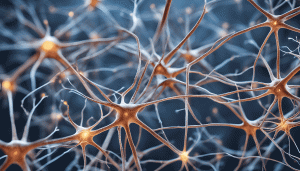In the rapidly advancing field of artificial intelligence, neural networks have emerged as a powerful tool for solving complex scientific problems. With a multitude of neural network architectures available, researchers often face the challenge of selecting the most appropriate model for their specific scientific problem. This comprehensive guide aims to provide researchers with a deep understanding of various neural network types and their suitability for different scientific domains. By exploring the characteristics, strengths, and applications of feedforward neural networks, recurrent neural networks, convolutional neural networks, generative adversarial networks, and reinforcement learning, researchers will gain valuable insights into choosing the right type of neural network for their scientific problem.
Introduction
Artificial intelligence has revolutionized scientific research by providing sophisticated solutions to complex problems. Neural networks, a fundamental component of AI, have emerged as a powerful tool for researchers in various scientific domains. However, selecting the most appropriate neural network architecture for a specific scientific problem can be challenging. This guide aims to assist researchers in navigating the complexities of neural networks and choosing the right type for their scientific endeavors.
Feedforward Neural Networks
Feedforward neural networks are the foundation of deep learning models. These networks consist of input, hidden, and output layers, and information flows only in one direction. Feedforward networks excel at tasks such as classification and regression. Researchers must consider the problem characteristics, such as data complexity and input dimensions, when deciding to employ feedforward neural networks. Advanced techniques like deep neural networks and transfer learning can further enhance their capabilities.
Recurrent Neural Networks
Recurrent neural networks (RNNs) are designed to process sequential and time-dependent data. Unlike feedforward networks, RNNs possess feedback connections, enabling them to retain information from previous time steps. This makes RNNs ideal for tasks such as natural language processing and time series analysis. Researchers should consider the problem’s temporal dependencies and the need for context-based predictions when utilizing RNNs. Variants like Long Short-Term Memory (LSTM) and Gated Recurrent Units (GRU) address the vanishing gradient problem and improve RNN performance.
Convolutional Neural Networks
Convolutional neural networks (CNNs) have revolutionized image and video analysis. These networks employ specialized layers, such as convolutional and pooling layers, to efficiently process spatial data. CNNs excel at tasks like image classification, object detection, and semantic segmentation. Researchers should consider the problem’s visual nature, the presence of local patterns, and the availability of labeled training data when choosing CNNs. Techniques like transfer learning enable leveraging pre-trained CNNs for specific tasks.
Generative Adversarial Networks
Generative adversarial networks (GANs) consist of two interconnected networks: a generator and a discriminator. GANs are primarily used for tasks such as image generation, data augmentation, and style transfer. The generator network learns to generate realistic data samples, while the discriminator network distinguishes between real and generated samples. Researchers should consider the need for data synthesis, creative generation, or augmentation when employing GANs.
Reinforcement Learning
Reinforcement learning (RL) is a paradigm where agents learn through trial and error interactions with an environment. RL is particularly suitable for tasks involving decision-making in dynamic environments. RL has found applications in domains like robotics, optimization, and game playing. Researchers must consider the problem’s interaction dynamics, the availability of a reward system, and the need for sequential decision-making when employing RL algorithms.
Comparative Analysis and Selection Guidelines
To select the appropriate neural network type, researchers should conduct a comparative analysis considering several factors. These include the nature of the problem (e.g., image analysis, sequential data), data characteristics (e.g., input dimensions, temporal dependencies), available labeled or unlabeled data, computational resources, and performance requirements. Researchers should also consider the interpretability of the model, as some neural networks, like deep learning models, can be less interpretable than others.
Conclusion
Choosing the right type of neural network is critical for achieving optimal results in scientific research. By understanding the characteristics, strengths, and applications of different neural network architectures, researchers can make informed decisions and leverage the power of artificial intelligence to advance their scientific pursuits. With this comprehensive guide as a resource, researchers are empowered to embark on their neural network journey and unlock new possibilities in their scientific domains.


